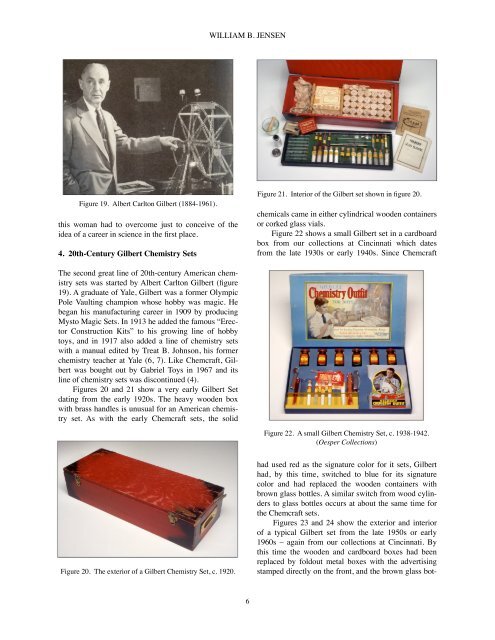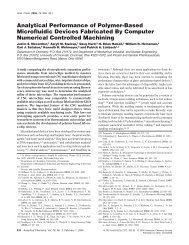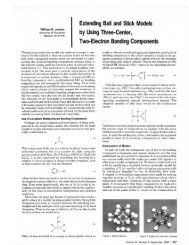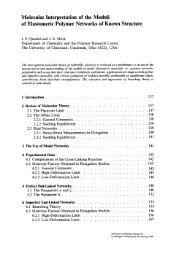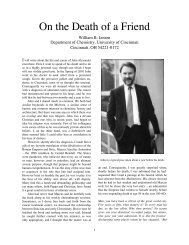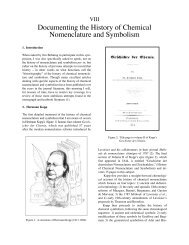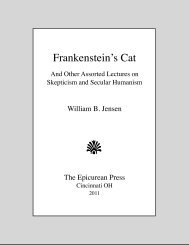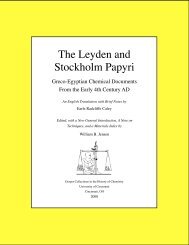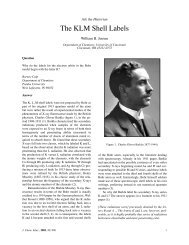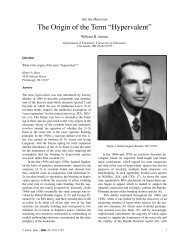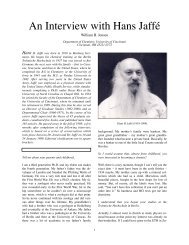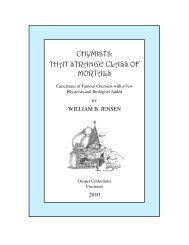03. Chemistry Sets 2'.pdf
03. Chemistry Sets 2'.pdf
03. Chemistry Sets 2'.pdf
Create successful ePaper yourself
Turn your PDF publications into a flip-book with our unique Google optimized e-Paper software.
WILLIAM B. JENSEN<br />
Figure 19. Albert Carlton Gilbert (1884-1961).<br />
this woman had to overcome just to conceive of the<br />
idea of a career in science in the first place.<br />
4. 20th-Century Gilbert <strong>Chemistry</strong> <strong>Sets</strong><br />
Figure 21. Interior of the Gilbert set shown in figure 20.<br />
chemicals came in either cylindrical wooden containers<br />
or corked glass vials.<br />
Figure 22 shows a small Gilbert set in a cardboard<br />
box from our collections at Cincinnati which dates<br />
from the late 1930s or early 1940s. Since Chemcraft<br />
The second great line of 20th-century American chemistry<br />
sets was started by Albert Carlton Gilbert (figure<br />
19). A graduate of Yale, Gilbert was a former Olympic<br />
Pole Vaulting champion whose hobby was magic. He<br />
began his manufacturing career in 1909 by producing<br />
Mysto Magic <strong>Sets</strong>. In 1913 he added the famous “Erector<br />
Construction Kits” to his growing line of hobby<br />
toys, and in 1917 also added a line of chemistry sets<br />
with a manual edited by Treat B. Johnson, his former<br />
chemistry teacher at Yale (6, 7). Like Chemcraft, Gilbert<br />
was bought out by Gabriel Toys in 1967 and its<br />
line of chemistry sets was discontinued (4).<br />
Figures 20 and 21 show a very early Gilbert Set<br />
dating from the early 1920s. The heavy wooden box<br />
with brass handles is unusual for an American chemistry<br />
set. As with the early Chemcraft sets, the solid<br />
Figure 22. A small Gilbert <strong>Chemistry</strong> Set, c. 1938-1942.<br />
(Oesper Collections)<br />
Figure 20. The exterior of a Gilbert <strong>Chemistry</strong> Set, c. 1920.<br />
had used red as the signature color for it sets, Gilbert<br />
had, by this time, switched to blue for its signature<br />
color and had replaced the wooden containers with<br />
brown glass bottles. A similar switch from wood cylinders<br />
to glass bottles occurs at about the same time for<br />
the Chemcraft sets.<br />
Figures 23 and 24 show the exterior and interior<br />
of a typical Gilbert set from the late 1950s or early<br />
1960s – again from our collections at Cincinnati. By<br />
this time the wooden and cardboard boxes had been<br />
replaced by foldout metal boxes with the advertising<br />
stamped directly on the front, and the brown glass bot-<br />
6


